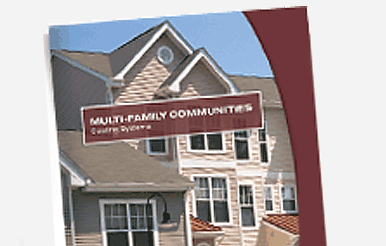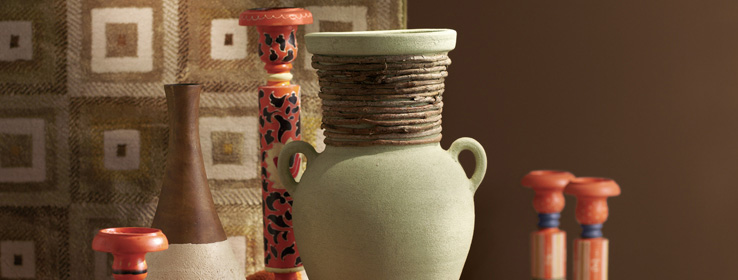Baby boomers, still as independent-minded as ever, are re-imagining their living spaces — and influencing design while they're at it.
When Una Elias decided to remodel her Connecticut vacation home, she called architect and interior designer Abby Suckle, who had also helped her remodel her New York City apartment. Like many clients, Elias bombarded Suckle with pictures. But Elias wasn't just offering inspiration; she was asserting her style. All she needed from Suckle was a little advice on her color choices.
"I spent two hours with her on the Connecticut design," says Suckle. "I didn't have to do much."
It's not that Elias doubts Suckle's expertise. She's just acting her age. At 42, Elias is on the tail end of the baby-boom generation of people born between 1946 and 1964. Like Elias, many have time and money to invest in newly empty nests, retirement dream houses and second homes. And when it comes to planning their mid- and late-life dwellings, baby boomers – the leading edge of whom came of age during the free-expression years of the mid-20th century – are "as independent-minded as they were in the '60s," says New York-based Dorothy Kalins, founding editor of Saveur and Metropolitan Home magazines.
Kalins, a boomer herself, says her generation doesn't follow established conventions. While their parents might have handed over the reins (and the checkbook) to designers for the latest look, "We realized that one style or another was not going to define us. What was important was that we could do any style that we wanted," she says.
Now that the peak of the independent-minded boomers are turning 50, they're creating a new model of adulthood, with a middle stage focused on renewal, according to American Demographics. Modern maturity, in the boomer playbook, is not about fading into retirement but rather an opportunity for reinvention.
With their children grown and their time and resources their own, boomers are pursuing their personal passions, whether that means trekking to Tanzania or painting their dining room deep purple.
Desire to be different
The style choices of America's 78 million boomers are wide and varied. Lisa Peck of Pisa Design in Minneapolis says the most consistent design thread among her boomer clients is a demand to be different and authentic, mixing personal pieces into a unique design scheme. She has one boomer client couple, for example, whose entire home is musically themed to match their shared passion for guitars.
Eclectic pieces, including travel treasures, are in high demand. Even if they don't purchase them while on a trip, worldly boomers want guests to know where their furnishings come from, says designer Ann Newton Spooner of Charlotte, N.C. When Sally Leider, a boomer teacher and life coach who works with other boomer clients, selected a Tibetan rug for her Minnesota home, she became so interested in the rug's origins that she sought out a workshop on Tibetan rug history.
"Not keeping up with the Joneses is how boomers are keeping up with the Joneses," says Peck. In spite of their idiosyncratic leanings, there are signs of boomer trends. Peck sees a lot of style-defining color. Serene neutrals are welcome, as are energetic (and retro) orange and lime green.
And shades of red and yellow are boomer favorites that cross state and style lines, says Spooner, a color specialist. While her boomer clients sometimes show their age by incorporating heirloom pieces with updated classical pieces, their color choices remain youthfully exuberant. "Red is very strong, as is yellow." (Back in Manhattan, Elias' sleek apartment features a three-room-long yellow wall.)
Kalins has a theory as to where at least part of the color trend comes from. "Red makes technology more friendly" for boomers, who are learning that an iPod is not an apartment for one. "Refrigerators are red, coffee makers are red," she notes. Nostalgia may play a part, too. "Painting a wall red was something we did in the '60s."
Spooner has a less glamorous explanation: Boomers don't see colors the same as they did when they were younger. Bolder colors are easier to see through no-line bifocals. Though some are loath to admit it, aging factors into boomer design selections.
Eternal optimists
A study commissioned by Hanley Wood, a media and information company for the housing and construction industry, found that only one in 10 boomers professed to being worried about life after 60. Perhaps hearkening back to idealistic earlier years, most said they are going to take aging "in stride." (Hanley Wood publishes STIR magazine on behalf of Sherwin-Williams.)
"This generation wants upscale living with less complication," says Frank Anton, CEO of Hanley Wood. "They want their homes to be manageable, temperate, affordable, flexible and accessible." That's accessible as in – shhhh – wheelchair-friendly wide doorways, easy-to-operate faucets and lowered toilet seats that go easy on arthritic hips.
Mid-50s baby boomers Mark and Kathy Shook are planning ahead. The couple recently remodeled the main living spaces of their Arizona home and plan to update their upper-level sleeping and bathing areas soon. On the to-do list are a no-step, doorless shower for safe entry. "And a spa tub will soothe the aches and pains" of aging bones, says Kathy. Some boomers don't have a choice. Universal design accommodations are now code on residential remodeling and new construction in New York.
Regardless of the reason, boomers "want finishes in their homes that are easily maintained, like tile flooring and smooth surfaces on countertops," says designer Denise Walton of Scottsdale, Ariz. The Shooks, who are Walton's clients, installed travertine marble floors and granite countertops, demonstrating yet another boomer trait: a preference for high-quality materials. "They want to have time to relax and not be repairing and replacing things," says Walton. "They want to do it right and not have to do it again."
Not surprisingly, one-floor homes, including airy downtown lofts, make for carefree and stylish living where convenient access to grocery stores, restaurants, theaters and coffee shops is a bonus. The savviest businesses are locating in neighborhoods attractive to the massive boomer population.
Room for the grandkids
Minneapolis architect Bruce Knutson fits many boomer trends. He is among the 60 percent of boomers who say they will downsize. "We went from 5,000 to 1,380 square feet and set up our home like a downtown loft," he says. "The kitchen is in the center," for ease of entertaining – a priority for boomers who finally have the time to linger.
Although social interaction is a high priority for boomers, a large majority have a "me-centric" vision with little interest in catering to their kids' or aging parents' needs, though many happily make exceptions for grandchildren. Knutson, for example, dedicated the entire lower level of his home to his four grandkids. An impervious floor, a chalkboard, toy storage, and a pool just outside the door keep the little ones close. Knutson says his grandchildren never want to leave.
And like most boomers, Knutson wants to "age in place" at his home. So do the Shooks, who plan to live out their years in the foothills of the Phoenix mountains.
Place is key for many boomers, according to Leider. That includes herself. "I grew up in a setting where there were a lot of beautiful views of the river and landscape," she says. In addition to her work as a life coach, Leider is a watershed-protection educator and advoc
ate who has returned to her roots on the St. Croix River. She says that the place boomers settle, whether it represents a return to roots or a new perspective, can be critical in identifying self. For Leider, a mood – a sense of sanctuary after busy years in the workforce – tops any particular design feature. And her home on the river evokes a desire for outdoor living and environmentally conscious values – boomer ideals germinated during those impressionable "flower power" years.
Wherever and however they choose to live, baby boomers are intent on renewing their spaces to reflect their own renewed outlooks on life. Elias said in the past she was more concerned about what people thought. She's getting beyond that – and her home reflects a typical boomer's quest for authenticity. "You walk into my house, and you say: 'This is Una,'" says Elias.
Whatever their style, boomers and their dwellings represent a massive market that design professionals can't afford to neglect.
5 Tips for Making Boomer Clients Happy
Baby boomers can be fiercely independent, but there are still ways design professionals can effectively help.
Let them take the lead. No one knows what boomers want better than they do.
Design for the ages. Provide suggestions on universal design and convenient features that boomers might otherwise miss (or avoid).
Think "last remodel.” Keep in mind that boomers will probably need to live with their choices for decades to come €“ and the older they are the less likely it is they'll remodel again.
Don't think "old.” Think "vital, active, engaged and aware.”
Make memories. Incorporate travel and personal pieces into a strong design foundation, but beware of sentimentality or nostalgia.







